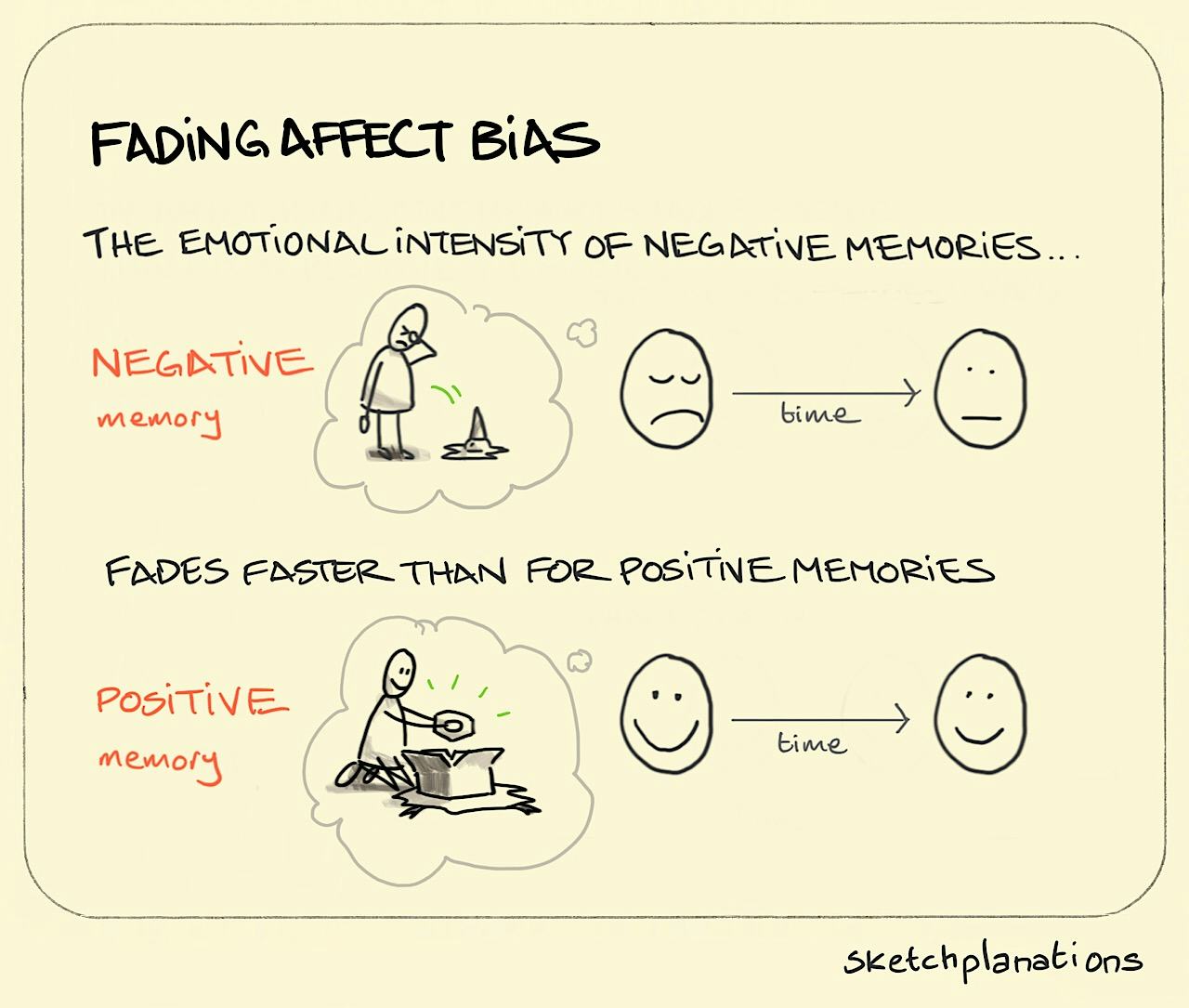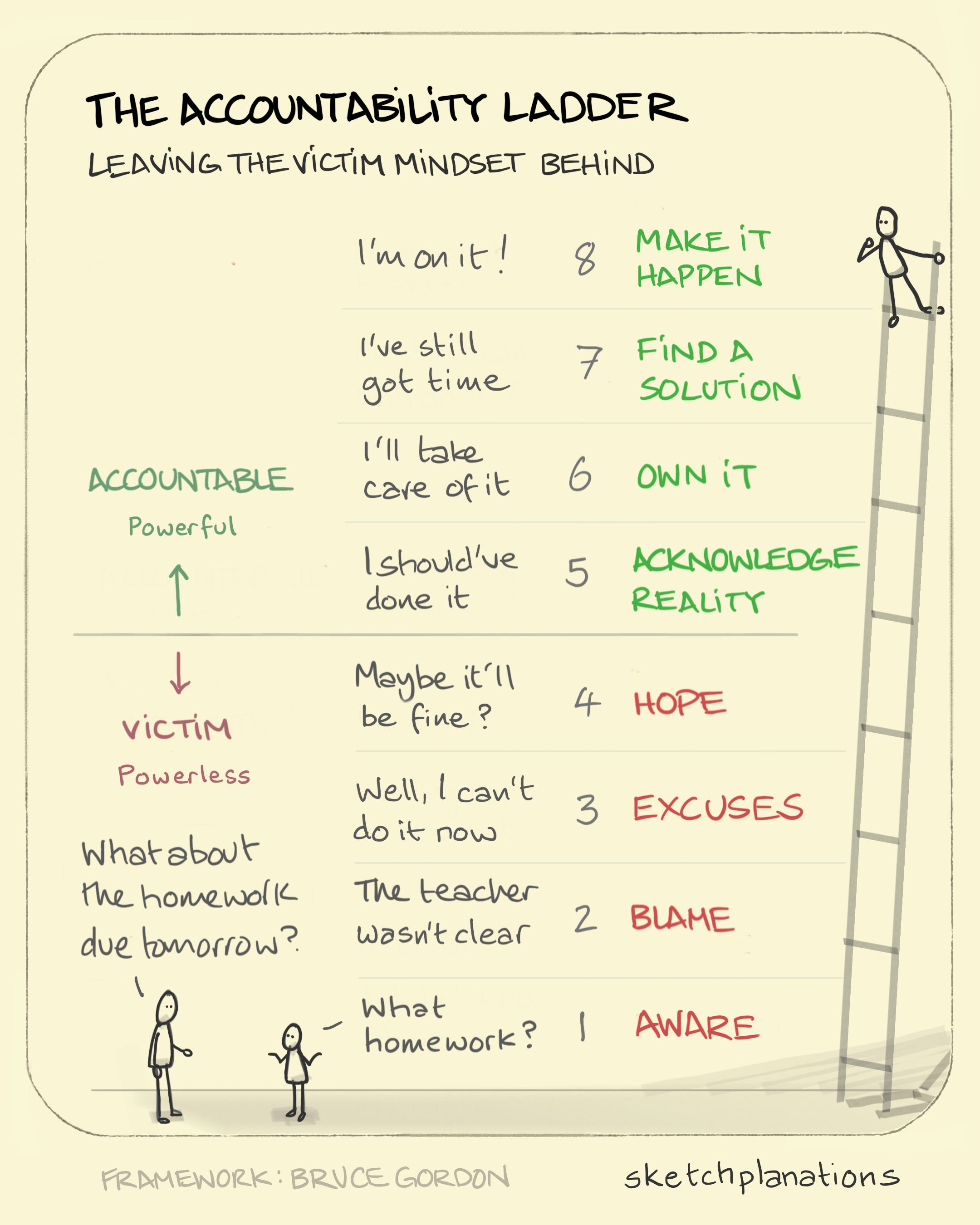Get my new weekly sketch in your inbox
Join over 30,000 people learning something new in a moment each Sunday.

Fading affect bias
It turns out that in general, the intensity of emotion, or the affect, of our bad memories seems to fade faster than for our good memories. This means that, say, our happy memories keep us happier for longer and our bad memories don’t affect us as much in the future. It’s called the fading affect bias as the fading is biased more strongly for negative memories.
This is handy as it naturally gives us a more positive disposition. So, for instance, after some time has past, we may find we remember the good parts of a holiday — like an amazing beach — more clearly than the bad — like the mosquitoes at the beach. And thinking about the good parts keeps making us happy longer than thinking about the bad parts might make us sad. Brilliant!
PS: This is a different use of affect than the common affect/effect confusion.
You’re welcome to use and share this image and text for non-commercial purposes with attribution. Go wild!
See licence

